'I'd willingly give a year of my life for a fortnight there': The green dream that is the garden of Derreen
Exotic woods, labyrinths of narrow, mossy paths and thousands of tree ferns make this an internationally important garden, writes Charles Quest-Ritson. Photographs by Jonathan Hession.

Dereen is an outstanding woodland garden in Co Kerry, where the rocky Beara Peninsula projects deep into the Atlantic Ocean. It has all the characteristics of Ireland’s best gardens — a beautiful natural position, a long history of intelligent cultivation, trees of record size and a huge range of tender plants. Yet Derreen’s unique feature is the thousands and thousands of tree ferns that have naturalised all through the garden over the past 150 years. There is nothing to match it anywhere in the northern hemisphere.
Derreen has belonged to the Fitzmaurice family since at least 1300. For most of that time, the windswept peninsula supported a subsistence economy supplemented by fishing. Its inhospitable landscape was covered by sparse native woodland of the Irish (or sessile) oak Quercus petraea and birch trees Betula pubescens, with blackthorn and scrubby holly underneath.
In 1600, an English force captured the old Fitzmaurice castle of Listowel, also in Co Kerry. Thomas Fitzmaurice, 18th Baron of Kerry, was forced to allow his five-year-old son to be taken to England, where he was raised as an Anglican. Thereafter, the Fitzmaurices made their way as courtiers and politicians in England, becoming Earls of Kerry in 1723 and Marquesses of Lansdowne in 1784. The 3rd Marquess improved Derreen by planting sycamore, ash and beech, as well as Scots and maritime pines to break the force of Atlantic gales. However, it was his grandson, the 5th Marquess, who initiated the horticultural plantings that are of such beauty and importance today.
Lansdowne was interested in estate management and saw that forestry would improve the value of his Irish estate, as well as providing shelter for the house and for the garden that he intended to create. In 1870, he began to plant 400 acres of woodland — an economic improvement on the scrubby oak and thin rocky landscape that housed his ever-growing collection of exotic trees and shrubs. His son’s verdict, written years later, was that ‘the mountain slopes adjoining [Derreen] have been clothed with thriving plantations, the success of which has shown how land of no agricultural value can be turned to good account under the favourable climatic conditions which prevail in the West of Ireland’.
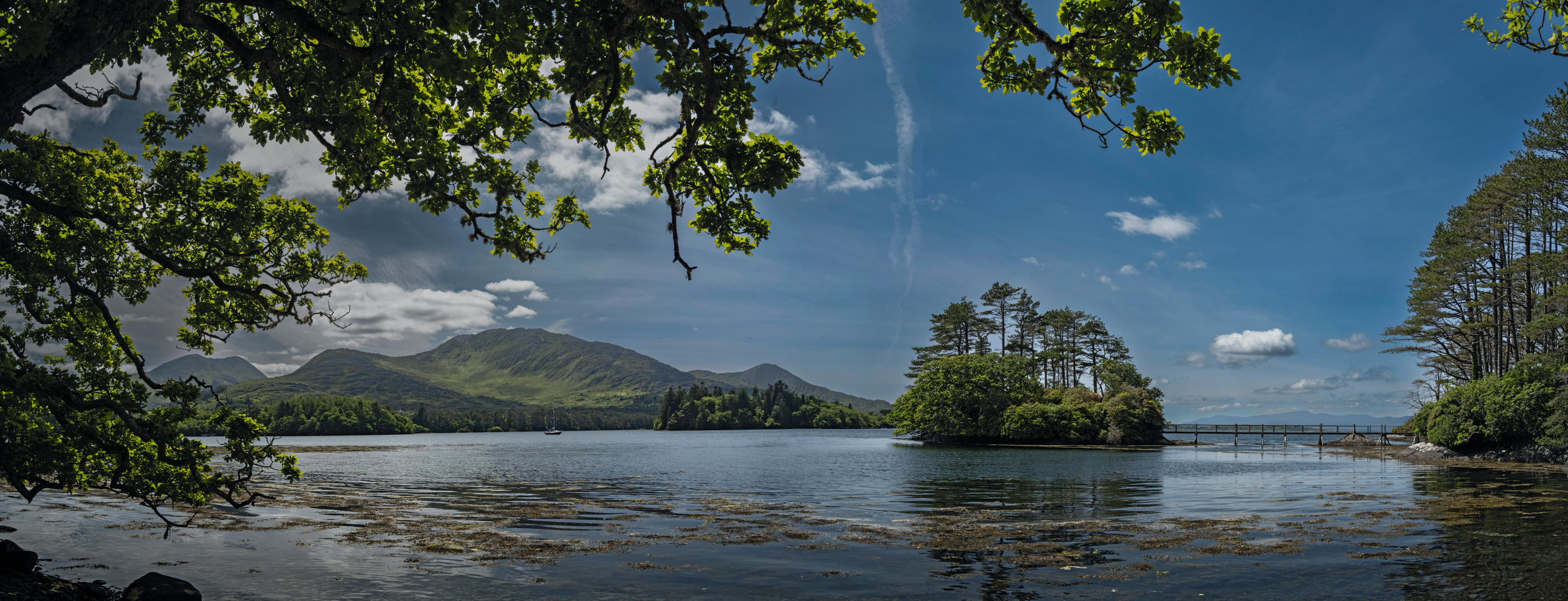
A rocky island in the Bay of Kilmakilloge is joined to the garden — in its deep and sheltered inlet — by a wooden causeway.
The garden occupies much of a 90-acre peninsula at the head of Kilmakilloge Harbour with views of the wild and weather-worn Caha Mountains. Among Lansdowne’s earliest plantings at Derreen that have survived until modern times are Chamaecyparis lawsoniana ‘Erecta Viridis’, now more than 105ft in height, and two Monterey pines, Pinus radiata, 100ft high, as well as a Eucalyptus globulus, all dating from the 1870s. He also planted more than 100 ironclad hybrids of Rhododendron arboreum, mainly from English nurserymen, such as Waterer’s in Surrey, and, later, many rhododendron species. Some of these were raised from seed brought back from the expeditions of Cox and Kingdon-Ward, to which he subscribed, whereas others came as gifts from subscribers to E. H. Wilson’s Chinese expeditions, including Sir Frederick Moore at the National Botanic Gardens in Dublin.
There are excellent records of the rhododendron species and hybrids that the 5th Marquess planted. Among the tallest in Ireland now are plants of R. sinogrande, R. delavayi, R. falconeri, R. niveum and the incomparable hybrid ‘Loderi King George’. Derreen can also boast some of the best specimens in the British Isles of R. arboreum, R. keysii, R. wardii, R. macabeanum, R. shilsonii and R. griffithianum. Rhododendron lovers will immediately recognise this list as proof of good cultivation in Derreen’s protected microclimate and damp, acid soil. A huge diversity of rhododendrons still dominates the evergreen underplantings, supplemented by a great number of camellias and, in the deepest shade, dense hedges of pernettya and gaultheria. Kalmias and leptospermums thrive, as do olearias, drimys and Chilean embothriums.
Lansdowne considered himself most fortunate to have inherited Derreen as a young man in 1866. In his old age, he reflected that ‘it became mine 56 years ago, and during that time the garden has become one of the most attractive in the United Kingdom and contains a collection of rare shrubs and plants to which every year has brought some addition’. It should also be said that every glade and path was made and almost every tree or shrub planted under his personal supervision. It is clear that he quickly became a most knowledgeable plantsman. His work at Derreen echoes the extensive arboretum and rhododendron collection that he made at Bowood, his better-known property in Wiltshire. Nevertheless, during the long periods of public service that he endured as Governor-General of Canada (1883–88) and Viceroy of India (1888–94), it was the thought of returning to Derreen that buoyed his spirits.
Sign up for the Country Life Newsletter
Exquisite houses, the beauty of Nature, and how to get the most from your life, straight to your inbox.
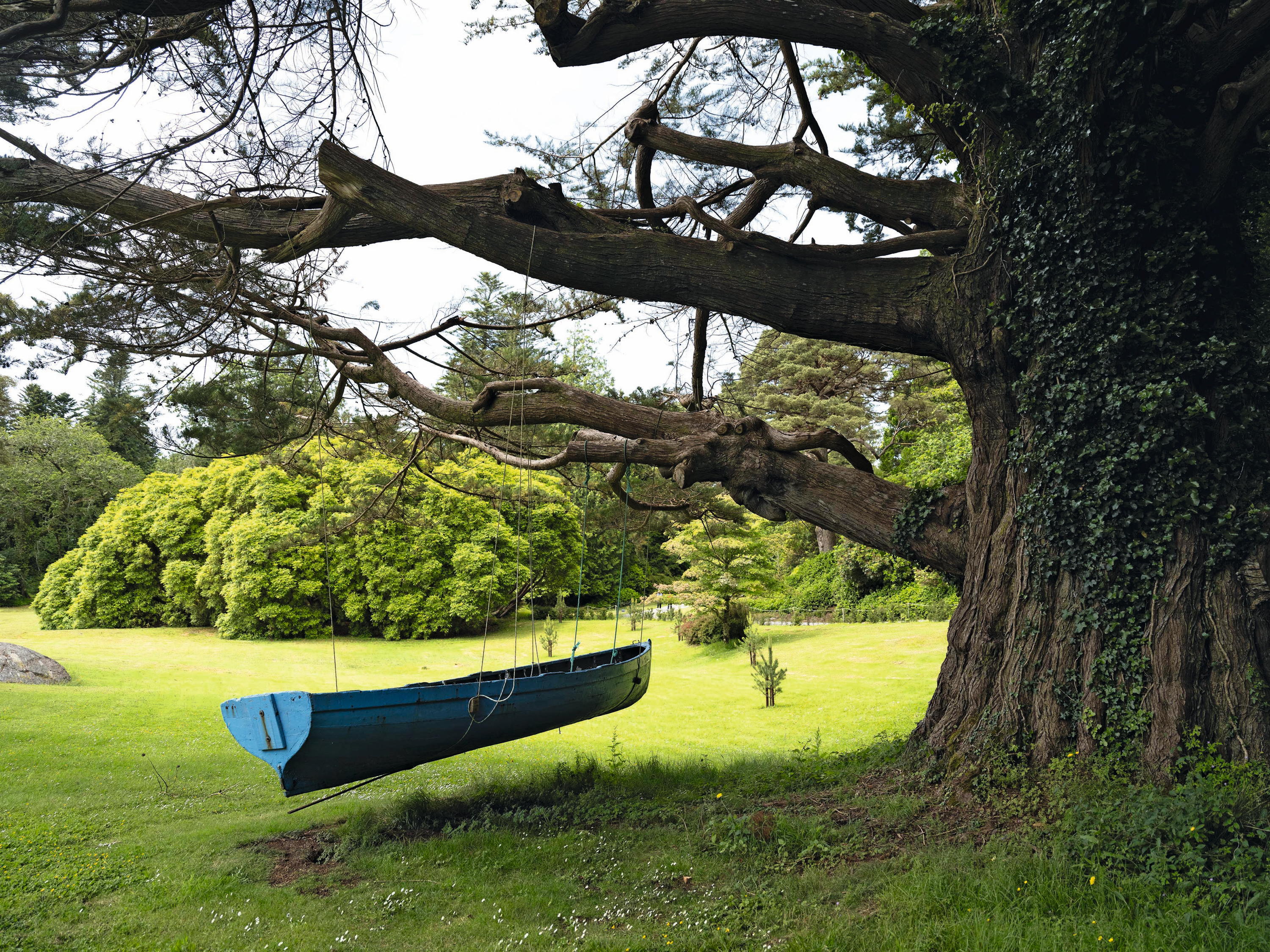
A boat suspended from a tree makes an ideal sculpture.
By 1906, the range of plants at Derreen was more than enough to impress the curator of Kew, William Watson, who wrote in the Gardeners’ Chronicle of ‘magnificent masses of Indian bamboos and gigantic coniferous trees’, adding that ‘I have never seen Abies nordmanniana so perfect and luxuriant as at Derreen’. Gaultheria shallon was 8ft high, Acacia dealbata 50ft and Veronica traversii at 5ft was considerably higher than in its native New Zealand. Watson was especially impressed by 15ft specimens of Fuchsia excorticata and a tree-like Griselinia littoralis near the house that is now a record-breaker at more than 50ft.
The house at Derreen is pleasant, but not at all grand, and was rebuilt immediately after the Irish civil war — a show of confidence in the future of the Irish Free State. A huge flat sandstone outcrop rises abruptly from the lawns in front of the house and a grassy corridor cut from the woodland runs down to the water’s edge. The only way to explore the riches of Derreen today, however, is to plunge straight into the exotic woods and follow the labyrinth of glades and views that lead the visitor ever onwards, up and down, through innumerable dells and combes. Wide grassy vistas give way to narrow mossy paths, weaving their way through groves of bamboo, towering eucalyptus, tree ferns and evergreen shrubs. Conifers are well represented. The original windbreaks were largely of Pinus radiata, Cupressus macrocarpa and Thuja plicata, but the heavy rainfall — 70in–80in a year — also suits the many forms of Chamaecyparis lawsoniana, Japanese C. pisifera and Cryptomeria japonica. Record-breakers include Tsuga heterophylla at 144ft and two plants of Thujopsis dolabrata from Japan, both of them well over 70ft high.
Lansdowne’s descendants continue to be active and enthusiastic improvers of Derreen. Storm Darwin on February 12, 2014, emphasised the need to reinforce the garden’s shelterbelts — gusts of wind up to 100mph, accompanied by heavy rain, made it the most damaging storm in the history of Ireland. Derreen lost 87 mature trees, many of great size, which was perhaps inevitable in a mature woodland garden where the elderly windbreaks were fraying at the edges and most of the plants throughout the estate grew in a shallow layer of acidic topsoil over bedrock. It was essential to tidy up, repair the damage and secure the garden’s survival with better defences against future gales. The owners needed to restore some of the historic plantings, too, and develop a policy for future management. One of the people they turned to for advice was the National Trust’s then head gardener at Stourhead in Wiltshire, Alan Power.

In the past 150 years, thousands of tree ferns, Dicksonia antarctica, have become naturalised, making Derreen unique among Irish gardens. Paths and glades have recently been restored and new plantings made of species that were lost to Storm Darwin in 2014.
Some years later, Mr Power left Stourhead and spent two years working full time with the team at Derreen. Many of the trees and shrubs that are known to have flourished in the garden in the past, but had since been lost, have now been replanted. Mr Power also suggested and supervised the successful installation of a deer fence to minimise marauding damage to the new plantings. Paths and glades were re-established and sometimes reshaped to accommodate the rarest and most sensitive plants, in sheltered backwaters far from the open views. As Lansdowne would have expected, new plants have been added, but always in spirit with the original garden.
Gardeners know that gales will sweep up seaside vistas, so only wind-resistant species can be planted to edge them. Nevertheless, much has been learned from Mr Power’s stabilisation of the plantings at Derreen. Cordylines and phormiums stand up well to salt winds and a surprise discovery has been the ability of griselinias to flourish, seed and establish themselves right on the edge of the shelterbelts, just above sea level.
It is not only griselinias that seed in the mild conditions at Derreen, the rare large-leaved rhododendrons R. macabeanum and R. sinogrande do, too. The ground around the magnificent silver firs Abies alba — the tallest is 150ft high — is littered with fast-growing seedlings.
The setting, the wide range of plants and the careful plantings at Derreen are a remarkable combination, but the thousands of tree ferns raise the garden’s heritage value to international importance. ‘You can’t help falling in love with it’ is Mr Power’s verdict on the garden, but he also points out that the 5th Marquess had a designer’s eye for picturesque plantings and learned much from the natural landscapes he encountered in India and Canada. It is only proper to let Lansdowne have the last word: when serving in India, but pining for Derreen, he wrote to a friend back home that he would ‘willingly give a year of my life for a fortnight there’. That is a sentiment immediately understood by visitors today.
Derreen, Co Kerry, Ireland, is open all year round. Visit www.derreengarden.com
Charles Quest-Ritson is a historian and writer about plants and gardens. His books include The English Garden: A Social History; Gardens of Europe; and Ninfa: The Most Romantic Garden in the World. He is a great enthusiast for roses — he wrote the RHS Encyclopedia of Roses jointly with his wife Brigid and spent five years writing his definitive Climbing Roses of the World (descriptions of 1,6oo varieties!). Food is another passion: he was the first Englishman to qualify as an olive oil taster in accordance with EU norms. He has lectured in five languages and in all six continents except Antarctica, where he missed his chance when his son-on-law was Governor of the Falkland Islands.
-
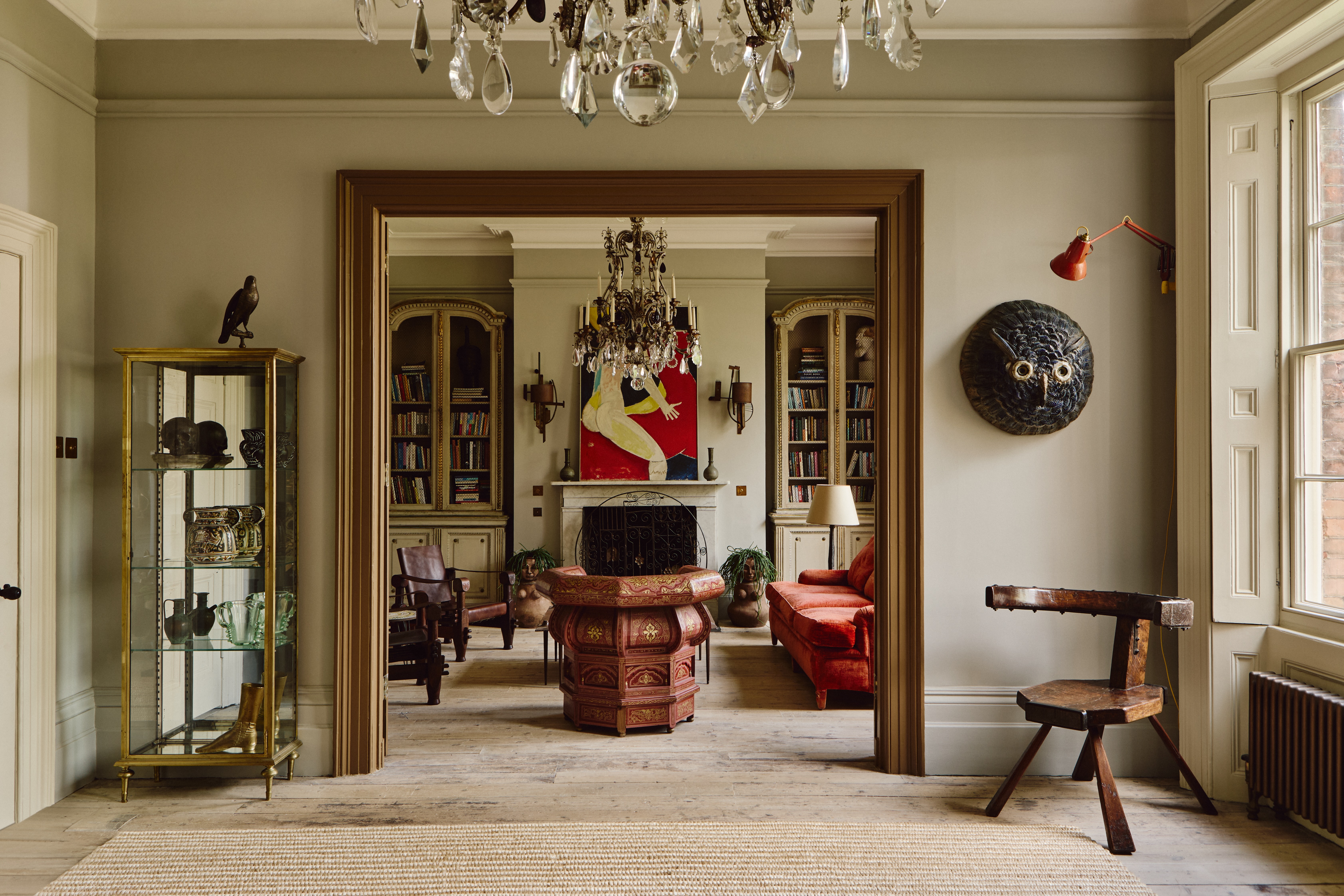 ‘It had the air of an ex-rental, and that’s putting it politely’: How an antique dealer transformed a run-down Georgian house in Chatham Dockyards
‘It had the air of an ex-rental, and that’s putting it politely’: How an antique dealer transformed a run-down Georgian house in Chatham DockyardsAn antique dealer with an eye for colour has rescued an 18th-century house from years of neglect with the help of the team at Mylands.
By Arabella Youens
-
 You're having a giraffe: Country Life Quiz of the Day, April 25, 2025
You're having a giraffe: Country Life Quiz of the Day, April 25, 2025Friday's Quiz of the Day brings your opera, marathons and a Spanish landmark.
By Toby Keel
-
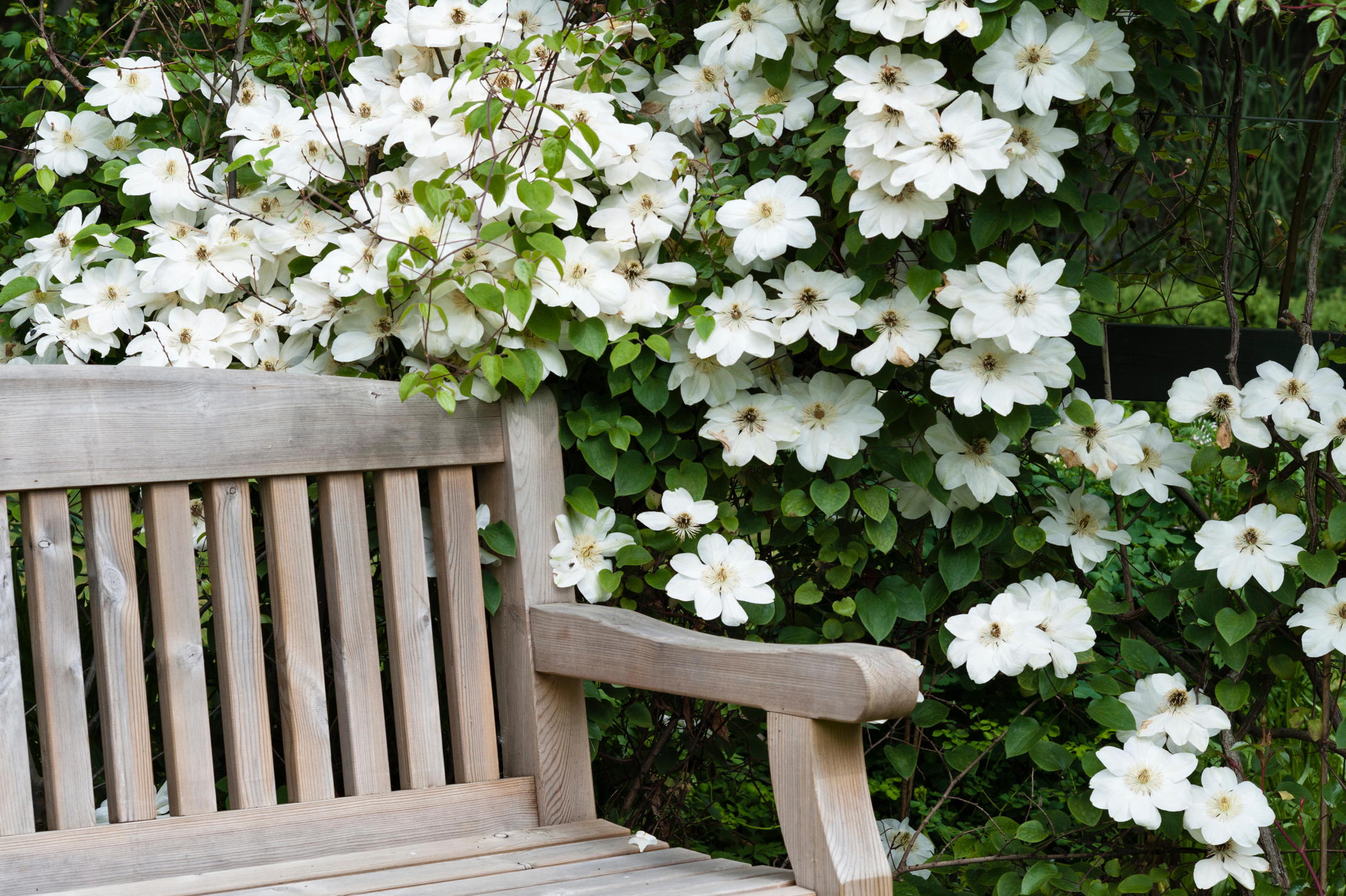 Six of the best Clematis montanas that every garden needs
Six of the best Clematis montanas that every garden needsClematis montana is easy to grow and look after, and is considered by some to be 'the most graceful and floriferous of all'.
By Charles Quest-Ritson
-
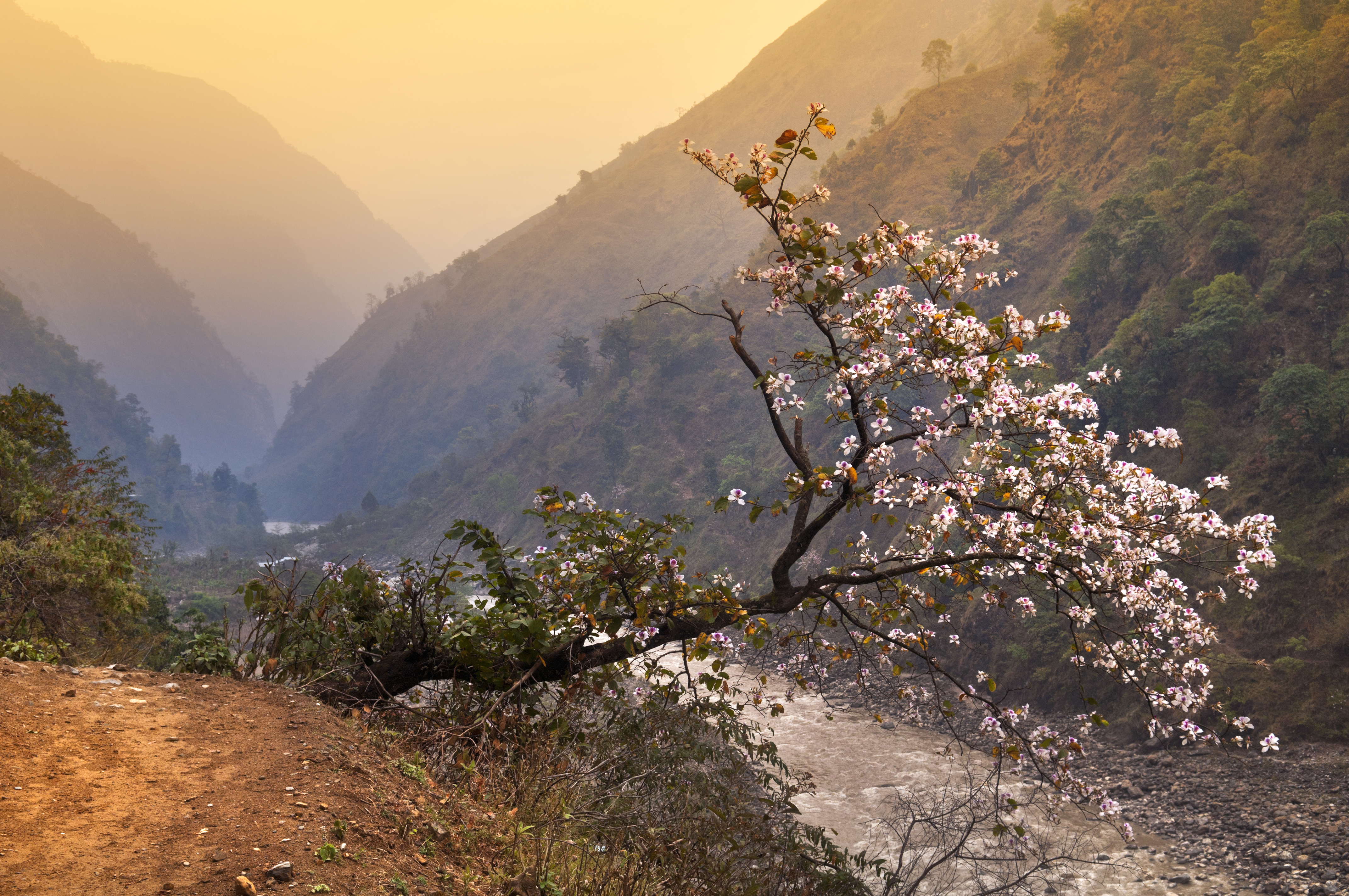 The man who trekked Bhutan, Mongolia, Japan, Tasmania and New Zealand to bring the world's greatest magnolias back to Kent
The man who trekked Bhutan, Mongolia, Japan, Tasmania and New Zealand to bring the world's greatest magnolias back to KentMagnolias don't get any more magnificent than the examples in the garden at White House Farm in Kent, home of Maurice Foster. Many of them were collected as seed in the wild — and they are only one aspect of his enthralling garden.
By Charles Quest-Ritson
-
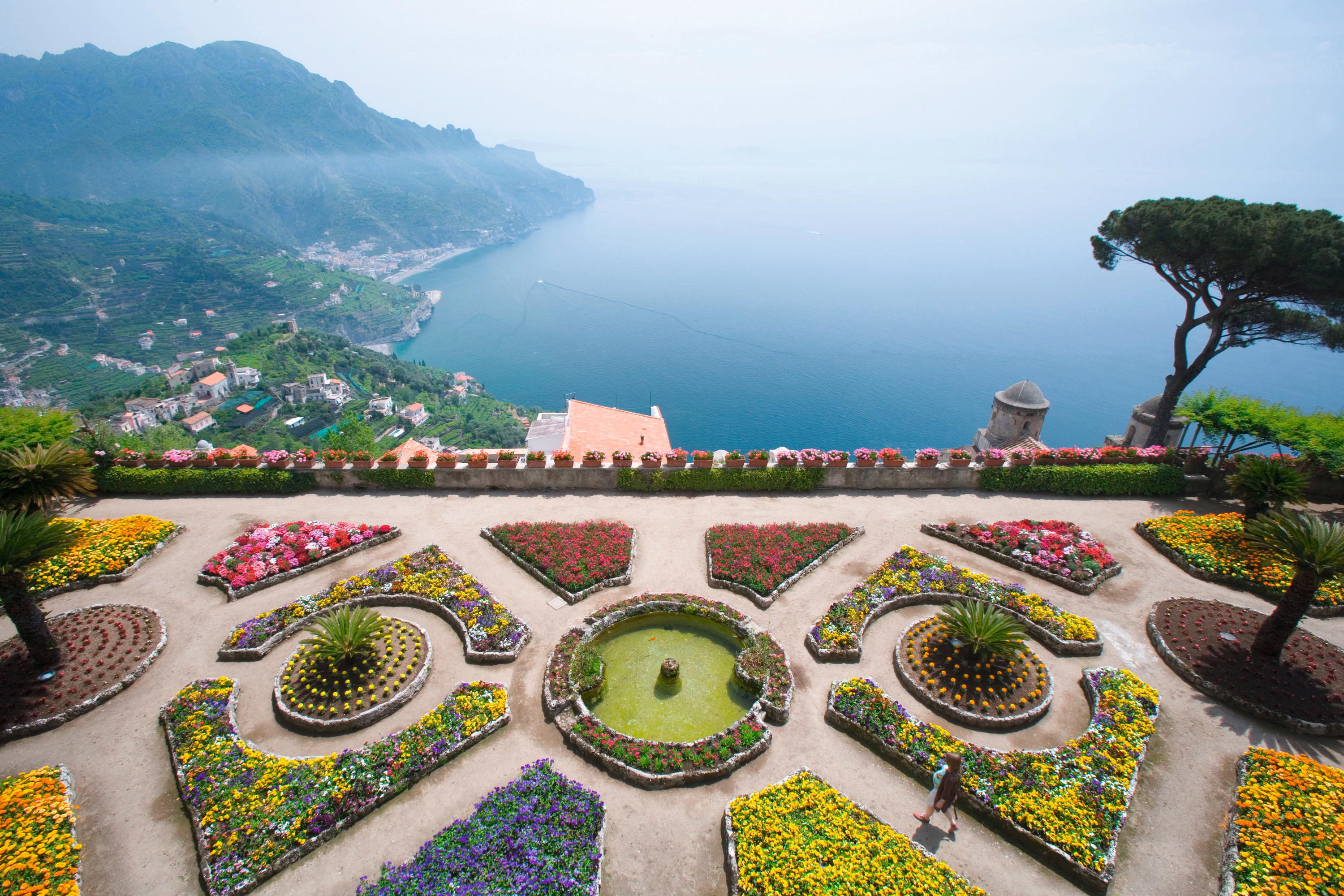 The 'breathtakingly magnificent' English country gardens laid out on the Amalfi Coast, and the story of how they got there
The 'breathtakingly magnificent' English country gardens laid out on the Amalfi Coast, and the story of how they got thereKirsty Fergusson follows the Grand Tour to Campania in Italy, where the English combined their knowledge and love of plants with the rugged landscape to create gardens of extraordinary beauty.
By Kirsty Fergusson
-
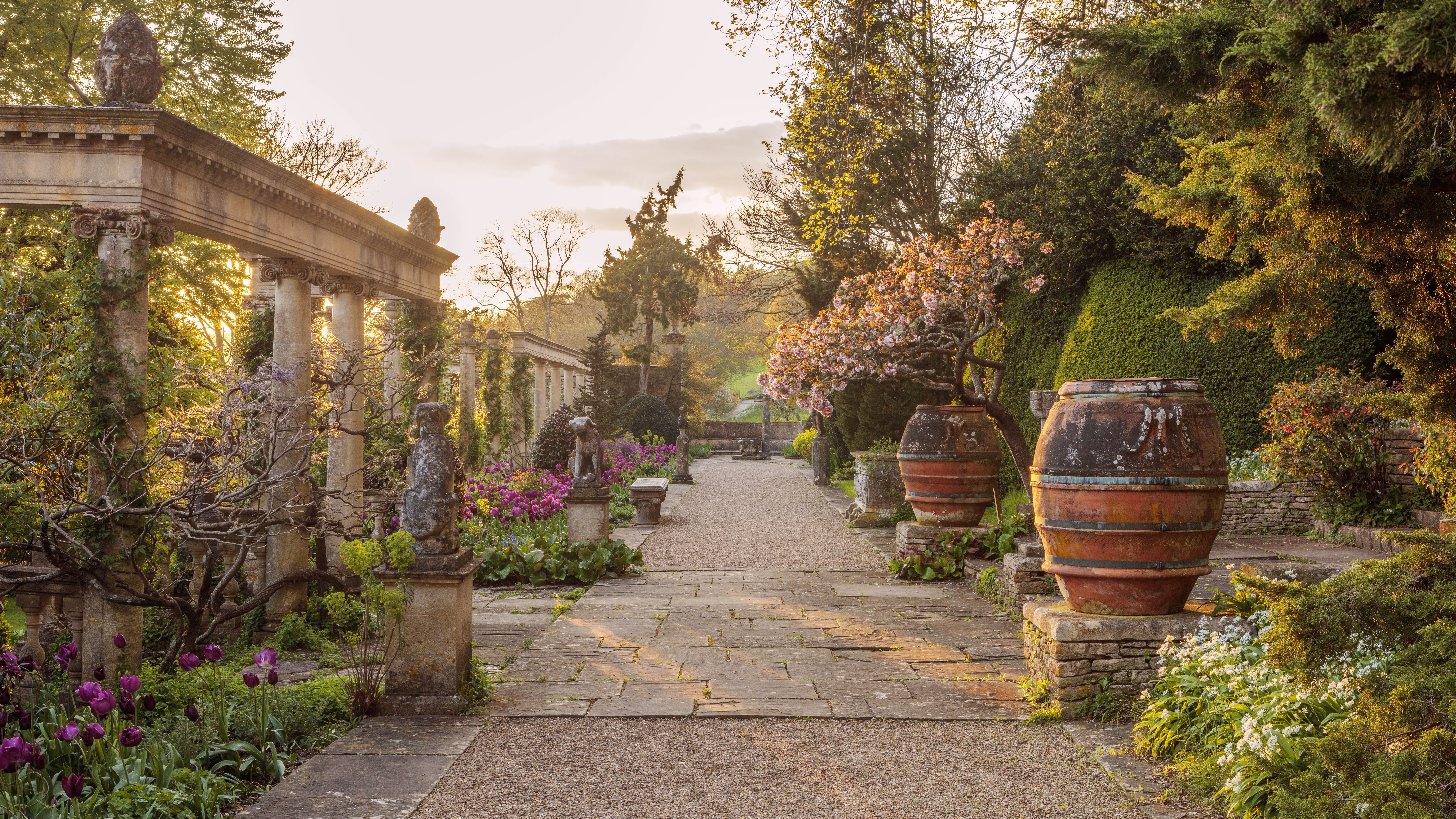 Have your say in the Historic Houses Garden of the Year Awards 2025
Have your say in the Historic Houses Garden of the Year Awards 2025By Annunciata Elwes
-
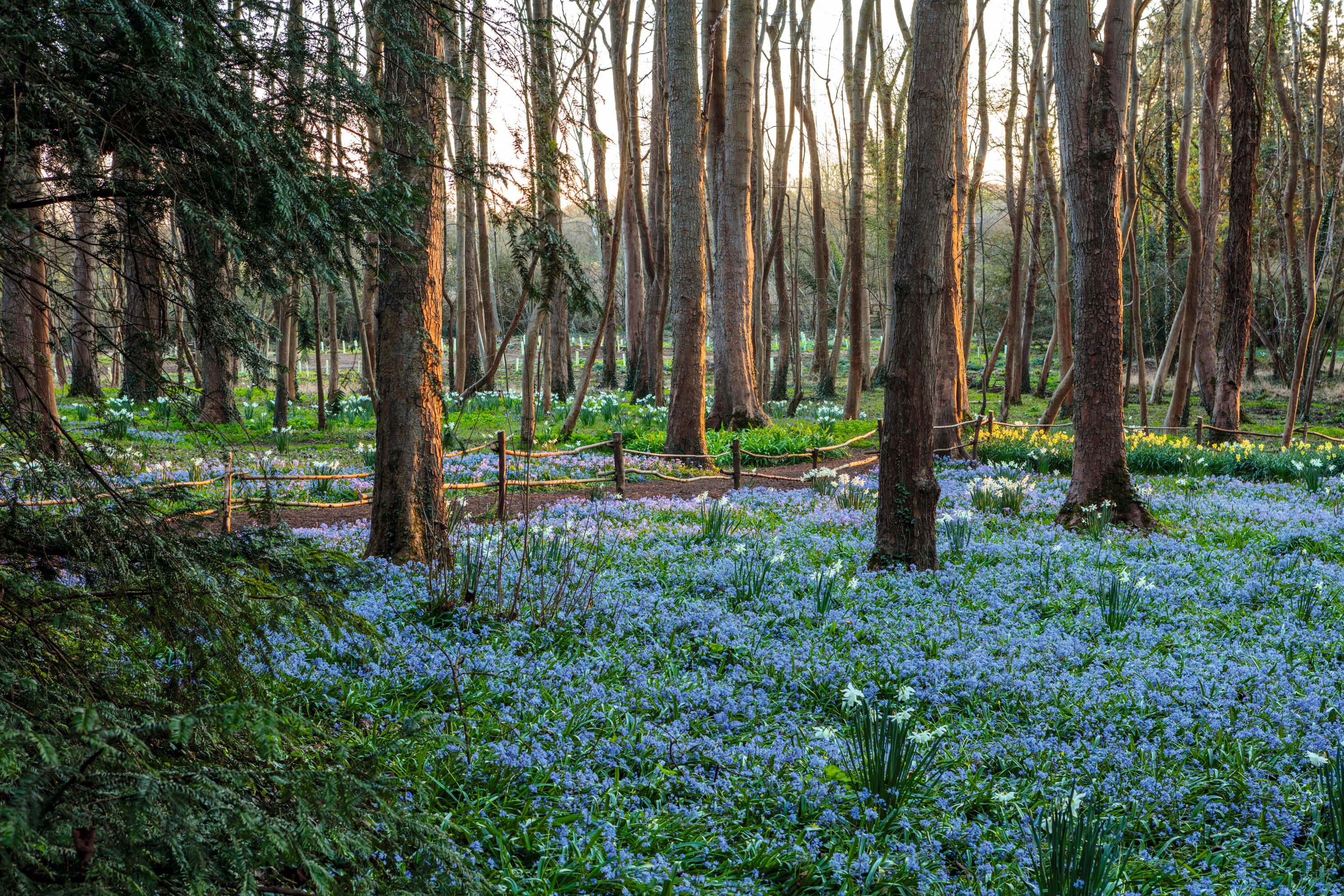 Evenley Wood Garden: 'I didn't know a daffodil from a daisy! But being middle-aged, ignorant and obstinate, I persisted'
Evenley Wood Garden: 'I didn't know a daffodil from a daisy! But being middle-aged, ignorant and obstinate, I persisted'When Nicola Taylor took on her plantsman father’s flower-filled woodland, she knew more about horses than trees, but, as Tiffany Daneff discovers, that hasn’t stopped her from making a great success of the garden. Photographs by Clive Nichols.
By Tiffany Daneff
-
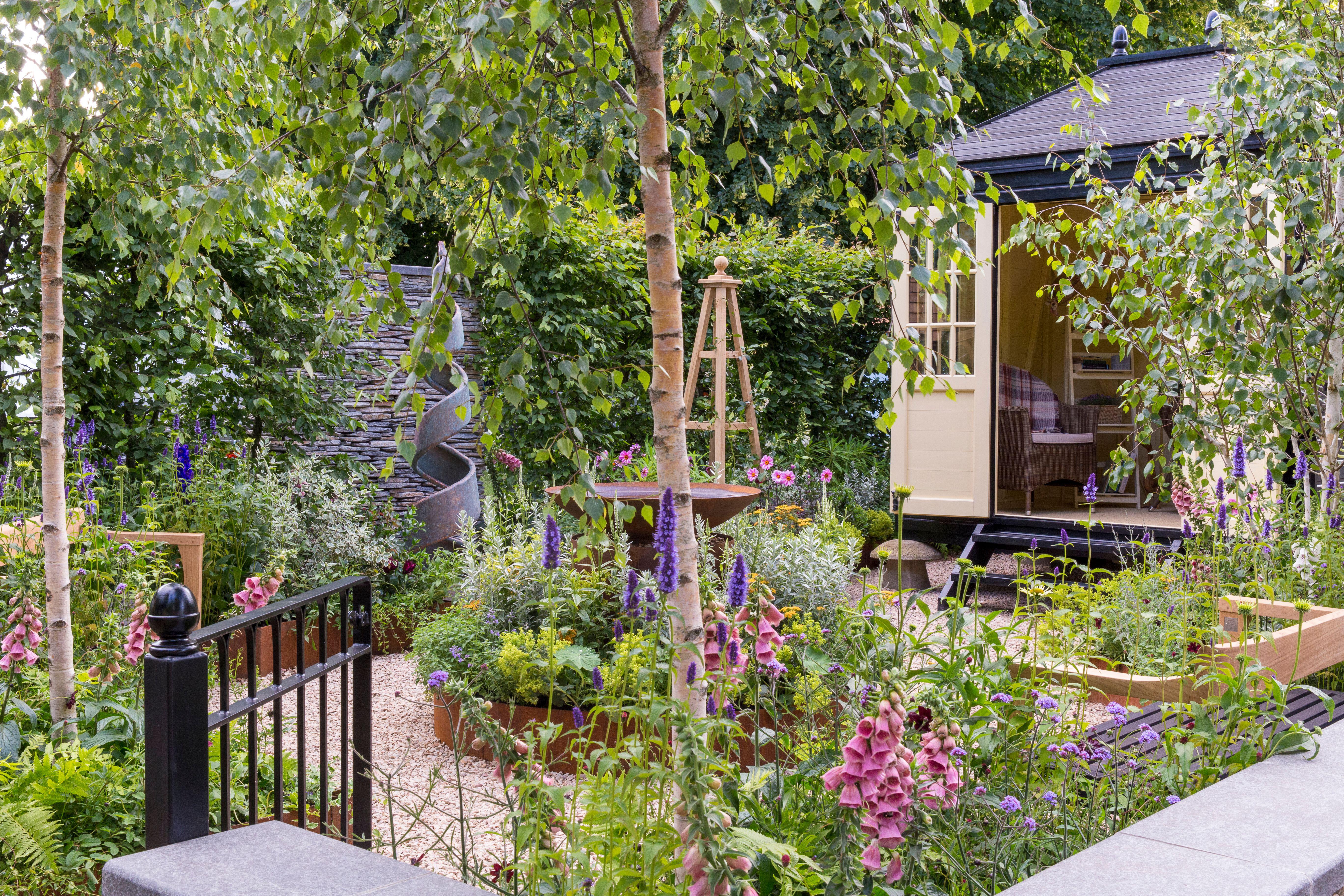 An expert guide to growing plants from seed
An expert guide to growing plants from seedAll you need to grow your own plants from seed is a pot, some compost, water and a sheltered place.
By John Hoyland
-
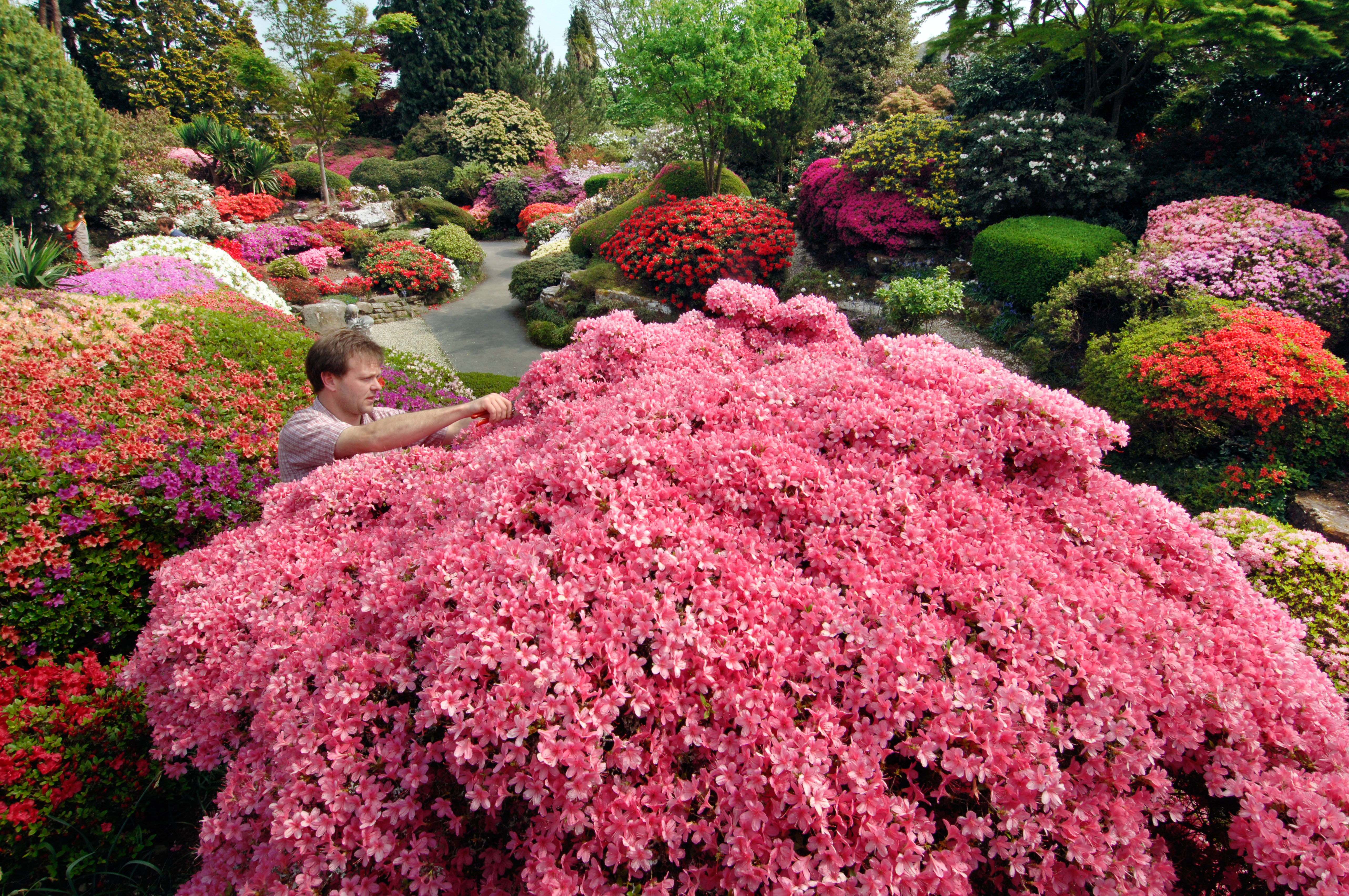 The best rhododendron and azalea gardens in Britain
The best rhododendron and azalea gardens in BritainIt's the time of year when rhododendrons, azaleas, magnolias and many more spring favourites are starting to light up the gardens of the nation. Here are the best places to go to enjoy them at their finest.
By Amie Elizabeth White
-
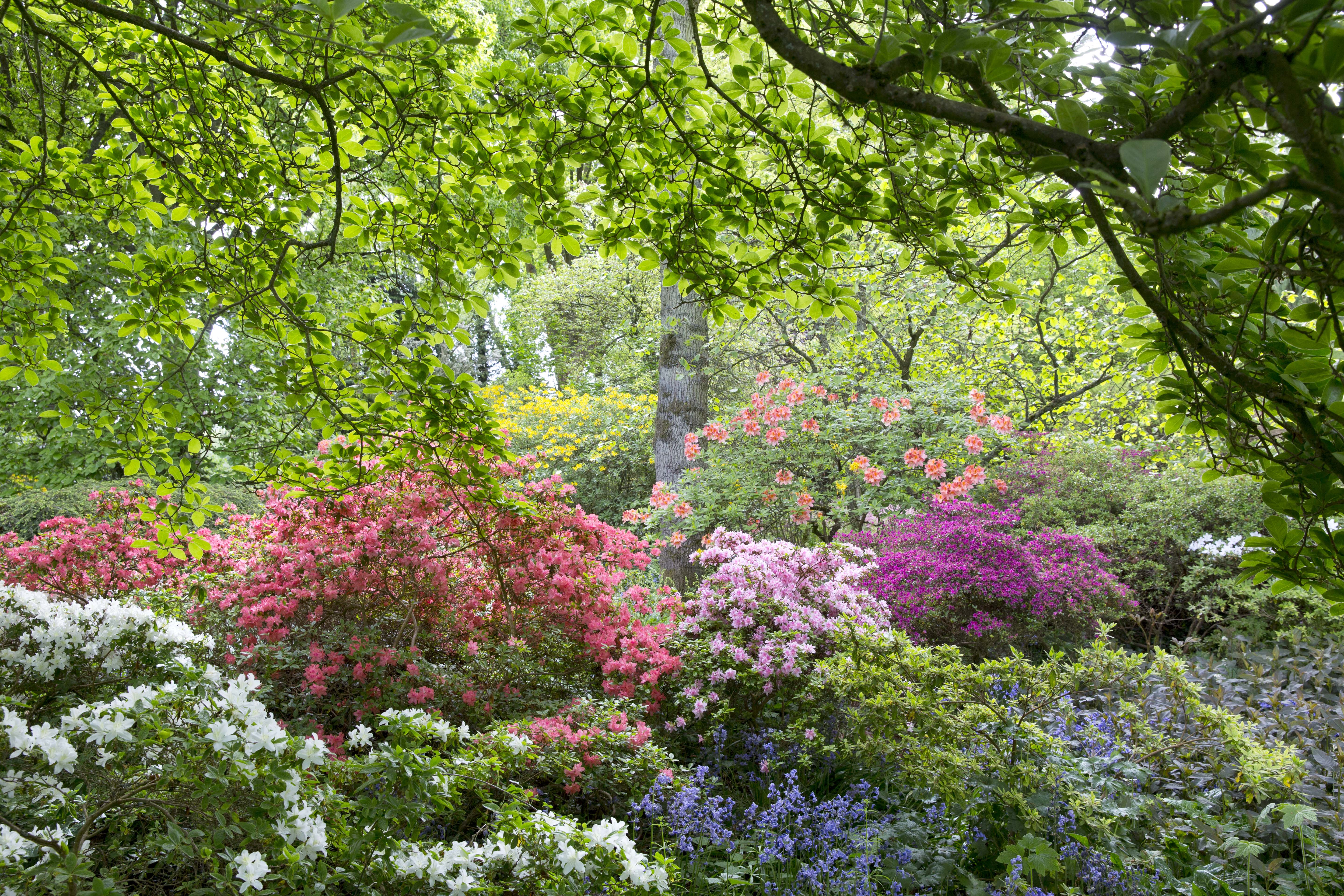 Great Comp: The blissful garden flooded with rhododendrons and azaleas that's just beyond the M25
Great Comp: The blissful garden flooded with rhododendrons and azaleas that's just beyond the M25Each spring, Great Comp Garden — just outside the M25, near Sevenoaks — erupts into bloom, with swathes of magnolias, azaleas and rhododendrons. Charles Quest-Ritson looks at what has become one of the finest gardens to visit in Kent.
By Charles Quest-Ritson